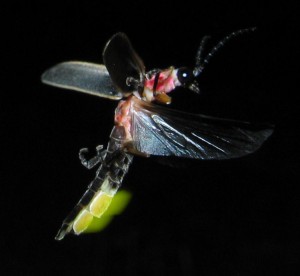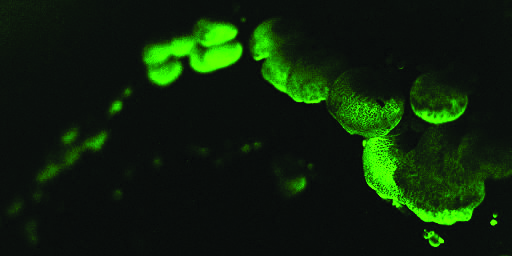Organisms have evolved to possess a wide range of useful abilities: flight, poison production, and even light emission. Although humans never evolved the necessary mechanisms to glow themselves, some bioluminescent species can in fact emit their own light. The trick? A specific type chemical reaction, which happens to have many practical applications.
The basic mechanism for bioluminescence is the same for most glowing species. An enzyme, generically called luciferase, interacts with luciferin, a molecule that organisms may ingest or produce themselves. This interaction yields two products: a substance called oxyluciferin and a photon of light, which can be observed as glow.

Not all creatures stop there. Crystal jellies, for example, emit photons of blue light that are absorbed by their own green fluorescent proteins and are emitted back at a lower wavelength. This re-emission of light produces a secondary type of glow called biofluorescence.
To glow in the dark may seem impressing in itself, but bioluminescence has many practical uses as well. Approximately 80 percent of bioluminescent species live in the deep sea, where they may glow to attract prey or to distract predators. Above water, species can use light to entice mates or to make themselves seem larger to predators. Bioluminescence also has applications in the laboratory. For example, professor Vincent Pieribone at the Yale School of Medicine works on bioluminescent methods to study action potentials in neurons, which enable brain cells to communicate with one another. He hopes that these techniques will help scientists study neural pathways in living subjects.
So, the next time you see a firefly or jellyfish glowing in the dark, be sure to appreciate the chemical processes that give them this special talent.
Cover Image: The fungi Panellus Stipticus is an example of a bioluminescent species. Image courtesy of Wikimedia Commons.

